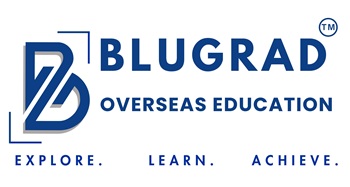Introduction
Planning to study in the United States? Securing a U.S. student visa is a crucial step in your academic journey. This blog provides a comprehensive checklist to help you navigate the student visa application process smoothly.
- Determine the Type of Visa You Need
For students, the most common visa type is:
- F-1 Visa: For students attending academic programs.
- Gather Required Documents
The F-1 student visa requires specific documentation. Ensure you have:
- A valid passport with at least six months of validity beyond your intended stay.
- A completed DS-160 form (Non-Immigrant Visa Application).
- Receipt of the visa application fee payment.
- A recent passport-size photo.
- Form I-20 (Certificate of Eligibility for Non-Immigrant Student Status) issued by your U.S. school.
- SEVIS (Student and Exchange Visitor Information System) fee payment receipt.
- Proof of financial ability to cover tuition and living expenses.
- Academic transcripts, diplomas, degrees, or certificates.
- Standardized test scores required by your U.S. school (e.g., TOEFL, IELTS, SAT).
- Schedule Your Visa Interview
Most student visa applicants must schedule an interview at the U.S. Embassy or Consulate. Remember to:
- Book your appointment well in advance.
- Bring all required documents to your interview.
- Be prepared to discuss your study plans, choice of school, and financial stability.
- Pay the Application Fee
Visa application fees vary. Ensure you:
- Pay the fee as instructed.
- Keep the receipt as proof of payment for your interview.
- Pay the SEVIS Fee
The SEVIS fee is mandatory for all F-1 visa applicants. Make sure you:
- Pay the SEVIS fee before your visa interview.
- Keep the payment receipt as proof.
- Attend the Visa Interview
The visa interview is a critical part of the application process. Tips for success include:
- Dress appropriately and arrive on time.
- Answer questions honestly and confidently.
- Provide clear and concise information about your study plans and financial resources.
- Additional Tips
- Financial Preparation: Have proof of sufficient funds to cover your stay.
- Health Insurance: Check if your school requires health insurance.
- Stay Updated: Keep an eye on any changes in visa policies or requirements.
Conclusion
Obtaining a U.S. student visa requires careful preparation and attention to detail. By following this checklist, you’ll be well-prepared to embark on your academic journey in the U.S. For personalized guidance, consider consulting with a visa expert or your educational consultancy.
Call to Action
Need more assistance? Contact us at +91 9535346110 (BluGrad Overseas) for expert advice and step-by-step support in your student visa application process.
